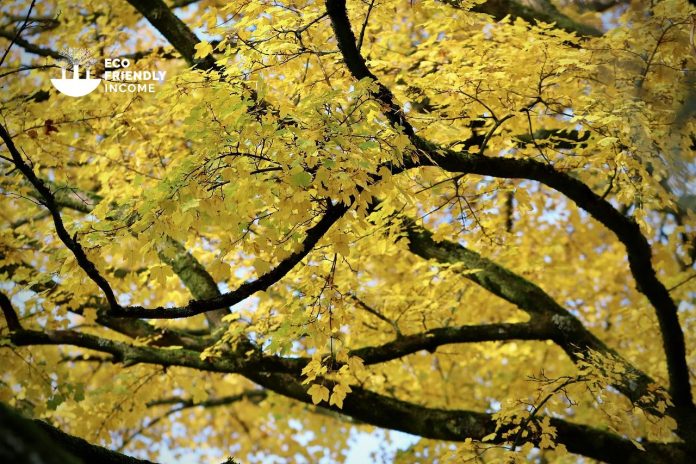A field guide on how to identify and propagate Norway Maple (Acer platanoides), a hardy tree that is native to Europe and Western Asia.
How to Identify Norway Maple (Acer platanoides)
Leaves
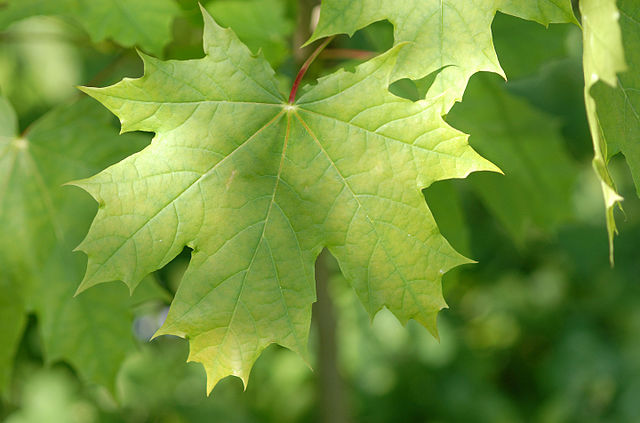
Norway maple leaves are palmately lobed, each leaf having from 5-7 pointy lobes. They grow on the trees in an opposite arrangement.
Bark
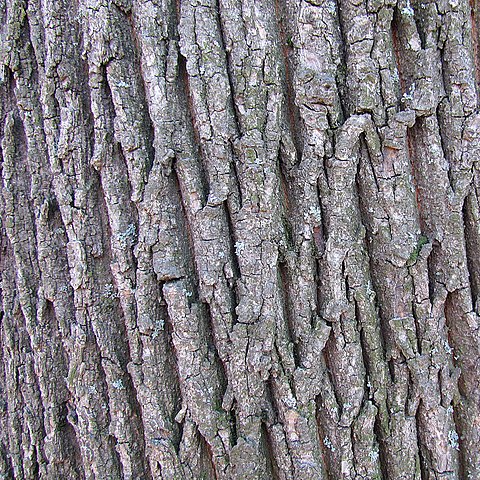
Norway maple bark is thick and grey-brown in color. You can typically see deep furrows with a scaly texture that tends to be flaky or scaly in appearance.
Their bark is extremely resistant to weathering and can often be seen on trees that are over 100 years old without any major signs of wear.
Flower
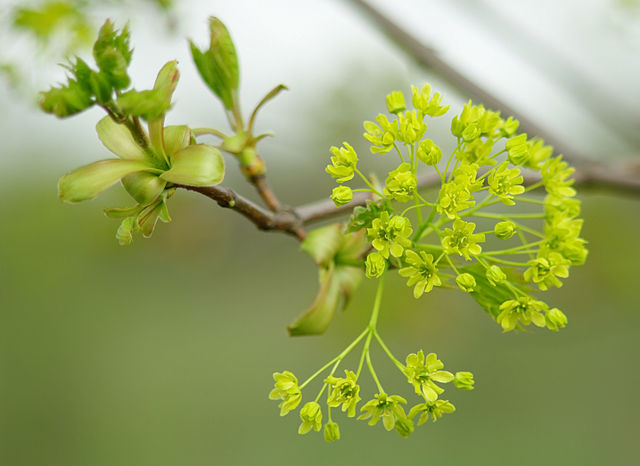
Norway maple flowers are small, about 0.25 inch in diameter, yellow-green in color, and appear in dense clusters.
The flowers are followed by the production of paired samaras, which turn green as they mature and eventually split apart to release the seeds.
Flowering Season
You can spot Norway maple flowers in early spring before the leaves emerge.
Habitat
Norway maple primarily grows in lowland and low upland areas in its native habitat, as well as in mixed deciduous/coniferous forests.
You can also commonly find them in parks, gardens, and along streets in temperate climates.
It was introduced to North America from Europe in the 1700s and has become a significant invasive plant.
Wildlife Value
If you’re in North America, Norway maple is not considered a species of wildlife value in most areas, as it is an introduced species of tree.
In some areas, it may provide nesting and roosting habitat for certain species, such as songbirds.
How to Propagate Norway Maple (Acer platanoides)

Hardiness Zone: 4-8

Soil Type: Well-drained clay, loam, sand.

Water: Normal.

Exposure: Full Sun to Partial Shade
Warning: We discourage the propagation of Norway Maple in North America, as it is an invasive species.
If you’re in Europe and would like to propagate Norway Maple, you have two effective methods:
- Stem Cuttings: It provides established trees faster, but is tricky, and can have a lower success rate.
- By Seed: The success rate is high but takes longer to get established saplings.
Norway maple is a fairly easy tree to propagate using both methods.
Let’s take a look:
How to Propagate Norway Maple (Acer platanoides) by Seed
If you have access to Norway Maple trees nearby, all you need to do is wait until the seeds mature to collect them.
They fall in thousands, so it will be easy to collect many seeds at once.
Alternatively, you can order seeds online at Tree Seeds Online.
How to Harvest Seeds
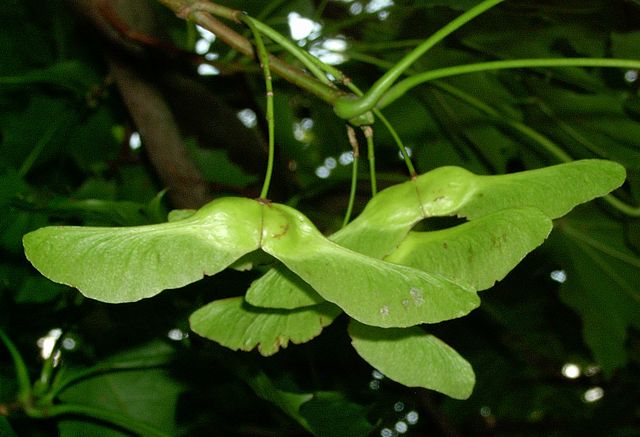
The winged seeds ripen and fall by September through October.
Once you have your seeds, before you sow, you will need to cold-stratify them.
You can sow the seeds in pots and leave them outside through the winter, which will naturally stratify.
Alternatively, you can cold-stratify them yourself at home using your refrigerator.
Here’s how:
- Place your seeds in a ziplock bag along with mulch or sand, moisten them, then close the bag (leave a slight gap for air exchange).
- Tag your bag with the date and name, then place it into your refrigerator (4 degrees) for 120 days.
- Check regularly to make sure the mixture hasn’t dried out, after the time has elapsed, you can germinate if they haven’t sprouted already!
Sowing
After the cold-stratification treatment, sow into pots, cover to retain moisture, and wait for germination.
They should germinate within a week. If not, cold treatment can be repeated with the remaining seeds.
During the first year, you can expect about 20-50 cm of growth and should wait at least 2 years before planting permanently.
How to Propagate Norway Maple (Acer platanoides) by Cuttings
Another great method to propagate Norway Maples is to take stem cuttings.
For softwood cuttings, the best time to get them from the trees is between Spring and mid-Summer.
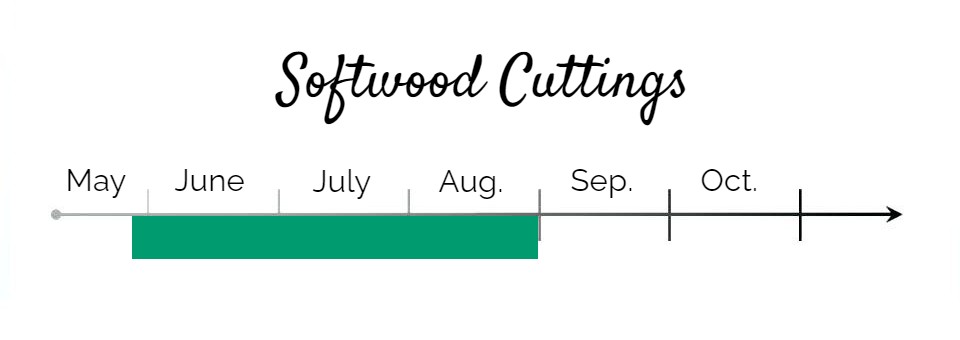
Important: When selecting a tree, it is best to look for one that is 3-4 years old, as older, mature trees lose the ability to regenerate.
Here’s the best way to do it:
- First, identify a branch that’s got new growth and take a closer look at the shoots.
- Find a piece of branch that’s not firm, brown old growth, it’ll be green but by now it will have gone semi-hard.
- Snip a shoot off just below a node, but don’t take branches too thin, 1/4 inch width minimum, and they should be 2-6 inches long.
- Use a razor blade to scuff the base of the cuttings and expose the cambium. Make a vertical line on opposite sides, about 1 inch long.
- Next, dip them in rooting hormones (IBA TALC 3000 PPM), knock off the excess with a light flick, then plant them into your propagation substrate.
- Finally, keep watering the rooting medium, the substrate shouldn’t be soggy but it should stay moist.
A good substrate to use is a mix of perlite and peat moss.
Roots usually form within 4-6 weeks.
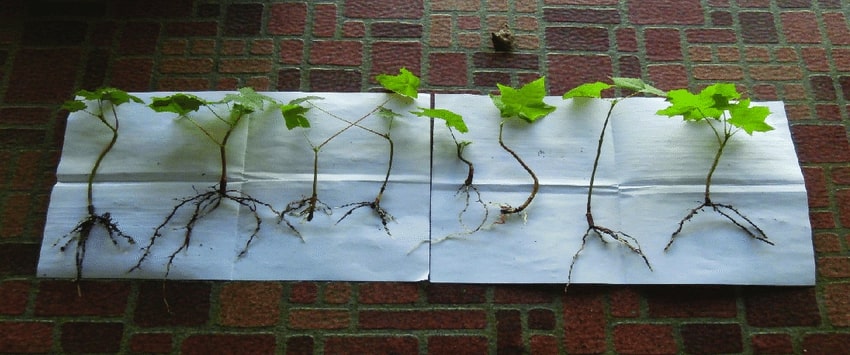
After they have rooted like this, carefully transplant them into individual pots using a mix of compost and sand.
FAQ
Q: Is Norway maple invasive in Canada?
A: This species, Norway maple, has the potential to cause extensive damage to forests in southern Ontario and eastern North America, as it is highly invasive. In areas close to cities, it has been observed that ravines, parks, and other natural surroundings are dominated by this species.
Q: Is Norway maple fast growing?
A: Norway Maple is capable of reaching up to 100 feet in height and living anywhere from 60 to 200 years. Established trees grow from 30-70cm per year.
Q: Is Norway maple a good tree to plant?
A: Yes, but be careful where you plant, in Europe it’s fine but in North American, Sugar maple should be planted instead. Norway Maple trees are great for creating shade.
Q: Can you root maple cuttings in water?
A: The likelihood of the plant’s roots growing in water is almost nonexistent because the stagnant environment will deprive them of the oxygen necessary for their growth.

